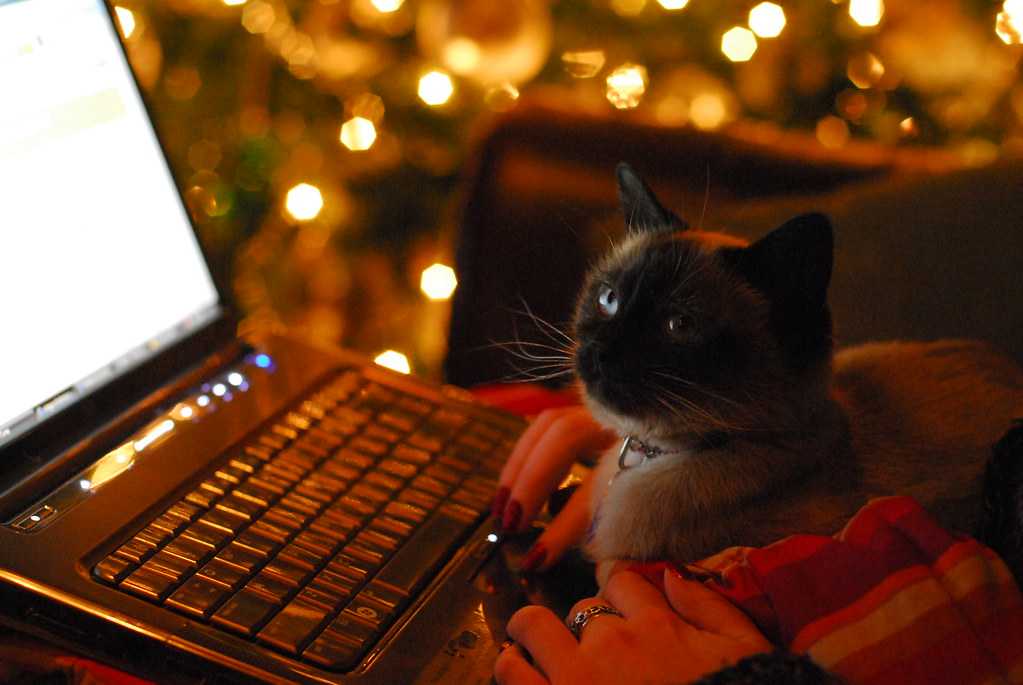 |
| Photo credit: tsuacctnt on Flickr |
So now that it is nearly 2016 and Beyond the Red edits are coming to a close, I've entered the stage of editing that once upon a time as a newbie writer I thought was the only thing writers needed to do in terms of editing: line edits.
As I have reiterated here many, many times, my baby writer self was hilariously wrong: line edits should be the last round of edits you do—not the first and only. But! After all the other more significant edits are worked out, there does indeed come a time to focus on the words on the page in a micro-sentence level.
I actually really enjoy line edits, especially when it's someone else's work (though I don't mind it in mine, either). And as I know many of you have enjoyed seeing me line edit with fixing the first page critiques, I thought I'd share some things I look for when line editing.
So in no particular order! Here we go:
- Filter phrases. I've written about filter phrases in depth, so I won't rehash everything here. But if you're finding phrases like "I thought," "I saw," "I heard," "I felt," "I remembered," etc., then I highly recommend you take a look at that linked post to learn how to strengthen your writing.
- Unintentional repetition. Sometimes, repetition can be used stylistically and can actually be a good thing—which is something that I like to do in my writing. But when it's done unintentionally, it can call attention to the word or phrase that was repeated and distract from the story. I find that reading your work out loud can be a good way to catch accidentally repeated words and phrases—and it's also not a bad idea to keep track of your known word crutches and do a search to hone in on those words specifically. (But remember—don't be afraid of using "said"!)
- Confusing/murky sentences. Sometimes a sentence that made sense in your head while you were writing doesn't make sense at all while you're reading. It happens. Writing, for me at least, often happens quickly and when I'm in a zone so to speak, and sometimes when I read back what I've written, I have no idea what my brain was trying to say. Line editing is the time when you clarify these awkward sentences so they don't slow your readers down.
- Voice specifications. This is very specific to the manuscript, but line editing is when you want to pay close attention to the voice. Does the character sound the way they should? If you're dealing with multiple POVs, does each character sound distinctive? Does the voice fit the genre and category that you're writing in? Would that specific character really say that specific word? This is when you really want to dig in and ask yourself if what's on the page is really how your character would speak and think. (For more help with voice, check out this post.)
- Showing vs. telling. If you've been writing for more than a day, then chances are extremely likely you've heard "show don't tell." When you start line editing, this is where you really want to pay attention to this rule and ask yourself if you're showing when you should be and telling when you need to (because there is a time when telling is important, too!). While reading, make sure you're able to picture the setting and what's happening in the scene based solely on the words on the page (because, remember, readers don't have access to the image you have in your head while writing—all they have are the words). And similarly, when you see something told to the reader, stop and ask yourself if there's a way you could write that more vividly by showing the readers whatever you're telling them.
- Interrupted/awkward flow. This is a little harder to describe, but you know it when you see it. When the flow of the writing is interrupted or gets awkward, it's often because of one of the problems above, but it's basically any time you have to slow down while reading because something in the sentence tripped you up. When this happens, it's helpful to reanalyze the sentence to figure out what it was, exactly, that forced you to slow down so that you can fix it.
The point of line edits is, in a sense, to make the writing invisible. Any time a reader stumbles over a word or phrase, or gets confused about something that wasn't explained clearly, they get pulled out of the story to re-analyze the words for clarification. Line editing should help you smooth the reading out, so that readers can stay completely invested in the story without getting distracted by an awkward turn of phrase on the page.
What do you look for when line editing?
Twitter-sized bites:
Not sure where to start with line edits? Author & assistant editor @Ava_Jae shares some elements to look for. (Click to tweet)
What do you look for when line editing? Join the discussion on @Ava_Jae's blog. (Click to tweet)








No comments:
Post a Comment